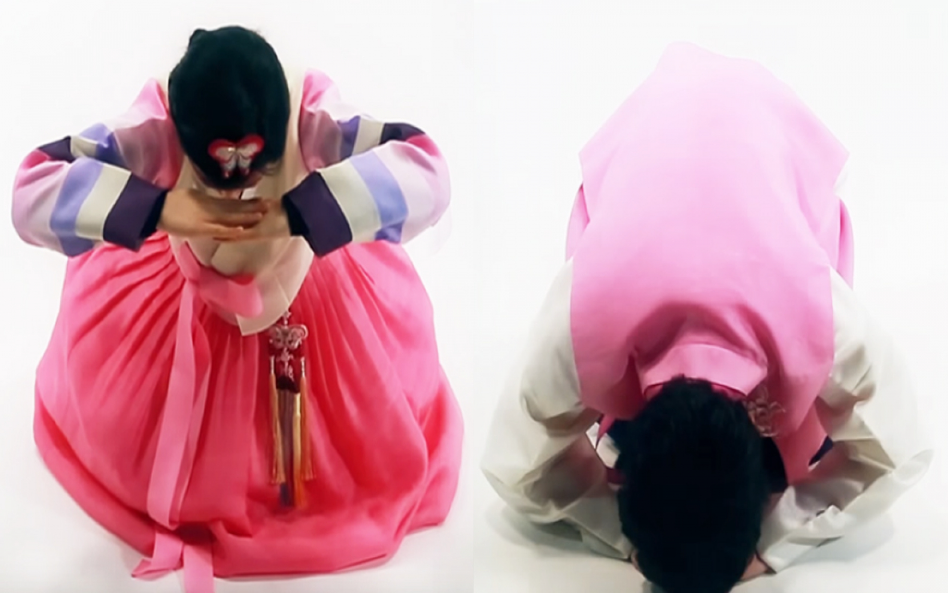Korean Greetings
In Korean culture, greetings hold significant importance as they reflect the values of respect, politeness, and hierarchy within society. When greeting someone in Korea, it is customary to bow slightly as a sign of respect, especially when meeting someone older or of higher status. The language used in greetings is also important, as there are different levels of formality based on the relationship between the individuals.
For example, the phrase “Annyeonghaseyo” is a formal greeting used when meeting someone for the first time or in a professional setting, while “Annyeong” is a more casual greeting used among friends or family. Additionally, using honorifics such as “oppa” for older brother or “noona” for older sister is common when addressing someone older. Overall, Korean greetings serve as a way to show respect and establish social hierarchies in everyday interactions.

Learning Basic Korean Phrases
Learning basic Korean phrases can be a fun and rewarding experience for those looking to expand their language skills. Korean is a language rich in history and culture, and mastering even a few basic phrases can open up new opportunities for communication and connection with Korean speakers.
By learning how to say simple greetings, expressions of gratitude, and common phrases for everyday situations, you can navigate through Korean-speaking environments with more confidence and ease. Whether you are planning a trip to South Korea, have Korean-speaking friends or family members, or simply have an interest in the language, taking the time to learn basic Korean phrases can enhance your overall cultural awareness and understanding.
With the availability of online resources, language apps, and language exchange programs, it has never been easier to start learning Korean phrases from the comfort of your own home. So why not take the first step towards expanding your language skills and immersing yourself in the beauty of the Korean language? Learning basic Korean phrases is a great way to challenge yourself, broaden your horizons, and connect with a whole new world of communication possibilities.
Different Ways to Say Hello
Greetings and salutations! There are countless ways to say hello in different cultures and languages around the world. From the traditional “hello” in English to the more formal “bonjour” in French, each greeting carries its own unique cultural significance. In Japan, one may say “konnichiwa” to say hello during the day, and “konbanwa” to say hello in the evening.
In Spanish, one may use “hola” as a casual greeting among friends, or “buenos días” to say hello in the morning. In India, “namaste” is a common way to say hello, often accompanied by a slight bow. In Hawaii, “aloha” is used as a greeting that also conveys love and affection. In some African cultures, people may say “jambo” or “sawubona” to say hello. It is fascinating to see how different languages and cultures have their own unique ways of exchanging pleasantries and showing respect to one another.
No matter how you say hello, the important thing is to show kindness and warmth in your greeting, as it sets the tone for any interaction. So next time you meet someone new, try using a different way to say hello and see how it can brighten their day.

Cultural Significance of Greetings
Greetings are an essential aspect of every culture around the world, serving as a way to initiate and maintain social interactions. They play a crucial role in establishing connections between individuals and are often deeply rooted in tradition and customs. In many cultures, greetings are seen as a form of respect and politeness, demonstrating an acknowledgment of the other person’s presence.
The way greetings are exchanged can vary greatly from one culture to another, with some societies placing a strong emphasis on formalities and rituals, while others prefer a more casual and relaxed approach. Additionally, greetings can also serve as a way to convey cultural values and beliefs, with certain gestures or phrases holding special significance within specific communities.
For example, in some cultures, a simple handshake may be seen as a sign of trust and equality, while in others, a bow or a kiss on the cheek may be more appropriate. Overall, greetings are a powerful tool for building relationships and fostering understanding between people of different backgrounds and beliefs, highlighting the importance of cultural awareness and sensitivity in our increasingly diverse and interconnected world.
Common Korean Greetings in Context
In Korean culture, greetings play a crucial role in daily interactions and are seen as a sign of respect and politeness. One of the most common greetings in Korea is “annyeonghaseyo,” which is used to say hello or hi. This greeting is typically used in formal situations, such as when meeting someone for the first time or when speaking to an elder. Another common greeting is “anyeong,” which is a more casual version of “annyeonghaseyo” and is often used among friends or peers.
In addition to verbal greetings, Koreans also commonly bow as a sign of respect when meeting someone. The depth of the bow can vary depending on the level of respect or formality of the situation. It is important to note that in Korean culture, the way greetings are exchanged can vary based on the age and social status of the individuals involved.
For example, when greeting someone older or of a higher social status, it is customary to use more formal language and show greater respect through the use of honorifics. Overall, understanding and properly using common Korean greetings in context is essential for building positive relationships and showing respect in Korean society.

Politeness and Respect
Politeness and respect are fundamental values in society that help to maintain harmonious relationships between individuals. When people are polite and show respect towards one another, it creates a positive environment where everyone feels valued and appreciated.
Politeness is reflected in the way we speak to others, using words like “please” and “thank you” to show consideration for their feelings. Respect, on the other hand, involves recognizing the worth and dignity of others, regardless of their background or beliefs. By treating others with politeness and respect, we demonstrate our understanding of their humanity and strive to build connections based on mutual understanding and empathy. These values not only enhance our personal interactions but also contribute to a more inclusive and compassionate society.
When people are polite and respectful towards one another, it fosters a sense of trust and cooperation that can lead to meaningful collaborations and positive outcomes. In contrast, when politeness and respect are lacking, it can create tension and conflict that undermine relationships and hinder progress. Therefore, it is important for individuals to cultivate these values in their daily interactions to promote understanding, empathy, and cooperation among all members of society. Ultimately, by practicing politeness and respect, we can create a more harmonious and inclusive world where everyone feels valued and respected.
Other Greetings Styles
In many cultures around the world, there are various styles of greetings that are considered traditional and customary. These greetings may differ from the typical handshake or hug that is commonly used in Western cultures. For example, in some Asian countries, bowing is a common form of greeting that shows respect and humility.
In the Middle East, it is common to greet someone with a kiss on the cheek or a warm embrace. In some African cultures, handshakes are accompanied by a series of intricate hand movements that convey a sense of camaraderie and friendship. These different greeting styles reflect the diversity of human expression and the importance of cultural norms in social interactions. While some may find these greetings unusual or unfamiliar, they are an integral part of many societies and should be respected and understood.
Learning about different greeting styles can help foster understanding and appreciation for the rich tapestry of traditions that exist around the world. By embracing these diverse customs, we can create a more inclusive and respectful global community.
